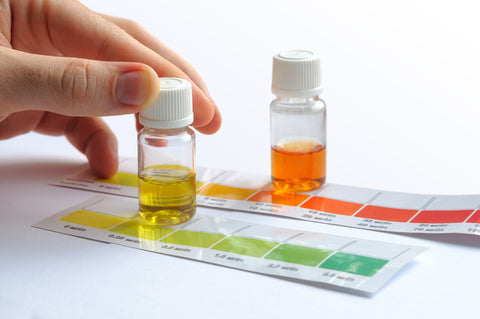
It is no secret that there are many different contaminants that can be found in our drinking water. Many of these are well known and include such materials as lead and copper. But there are other types of material that often find their way into the water as well, and these are nitrates.
In simple terms, nitrates are forms of nitrogen. As you may know, nitrogen is important for all organic matter, and it can be found in the air, the soil, and in water. In small amounts, nitrogen is useful for all living organisms. But if too much is ingested, especially through water, health problems can occur.
The most vulnerable populace to nitrate overload is babies. When babies are given water-based formula or drinking water that is high in nitrate content health problems can arise. The most common health problem is called methemoglobinemia. Many of you will also know this as a blue baby syndrome. This occurs when the blood is not able to carry enough oxygen and the baby, in essence, suffocates.
So how prevalent is this problem? The Environmental Protection Agency suggests that as many as 600,000 households have some form of nitrate level that is above the safe drinking water standard of 10 milligrams per liter.
Nitrates can be especially prevalent in rural areas and in well water. The reason for this becomes clear once we understand where much of this material comes from.
Rural areas that have been fertilized improperly or excessively over the years will often have a high level of nitrates. Inadequate or improper drainage systems for stormwater can also lead to higher levels of nitrates in groundwater and well water. Of particular importance to some homeowners is the high level of nitrates sometimes found near septic tank systems. This can lead to the material finding its way into the groundwater system or well water.
The best way to treat nitrate contamination is through prevention. This might include better maintenance of well water systems, less use of fertilizers, proper storage of manure, and periodic checks for nitrate levels.
The next level of protection is through the use of water filters, often in the form of point of use devices, or in some cases, point of entry water filter systems. The usual water filter treatment devices that are used for nitrate removal include ion exchange resins, water distillation, and reverse osmosis devices.
If you feel your water may be contaminated with nitrates, have it checked by a reputable laboratory. The cost of this test is very reasonable and well worth every cent you spend on it. They can tell you if you have a problem or not and how severe the problem is. If you discover that you have a problem with nitrates in your water, contact a reliable water filter vendor and discuss your needs with a professional.

